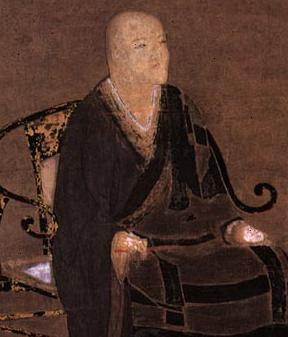Book Review: Eihei Dogen, Mystical Realist
 Hee-Jin Kim’s Eihei Dogen, Mystical Realist is a scholarly work by a respected Dogen scholar, placing Dogen’s thought in the context, primarily, of Buddhist philosophy and its history.
Hee-Jin Kim’s Eihei Dogen, Mystical Realist is a scholarly work by a respected Dogen scholar, placing Dogen’s thought in the context, primarily, of Buddhist philosophy and its history.
I enjoyed the early parts of the book, describing Dogen’s life. Here’s an interesting account of his enlightenment experience:
In 1225, a decisive moment of enlightenment in Dogen’s life came at long last during an early morning zazen session at geango (i.e., the three-month intensive meditational retreat). In the course of mediation, a monk next to Dogen inadvertently had fallen asleep. Upon noticing the monk, Ju-ching thundered at him: “In zazen it is imperative to cast off the body and mind. How could you indulge in slepping?” This remark shook Dogen’s whole being to its very core, and then an inexpressible, ecstatic joy engulfed his heart. In Ju-ching’s private quarters that same monring, Dogen offered incense and worshiped Buddha. This unusual action of Dogen prompted Ju-ching to ask: “What is the incense-burning for?” The disciple exuberantly answered: “My body and mind are cast off!” “The body and mind are cast off” (shinjin-datsuraku), jointed the teacher, “cast off are the body and mind” (datsuraku-shinjin). Thus, Ju-ching acknowledged the authenticity of Dogen’s enlightenment.
I was also interested in Dogen’s visit to my old home town of Kamakura (Wikipedia Wikitravel) during late 1247 and early 1248, where he preached before Hojo Tokiyori (Wikipedia). According to Kim, “there are different speculations as to what Dogen recommended to or discussed with Tokiyori during his stay in Kamakura.” I’d also like know where he stayed: could it have been at Enkakuji, the huge, dignified Rinzai temple in North Kamakura?
I have to admit to most of the rest of this book flying over the top of my head. It’s copiously annotated and clearly authoritative. It’s just that I’m not that interested in Buddhist philosophy—for instance, how Dogen’s concept of Buddha-nature differed from that of some Indian guy from the second century. Here’s a flavor:
Thus, temporal passage in the intra-epochal whole of a realized now, as Dogen saw it, was perhaps best descrbed in terms of the Hua-yen philosophy of simultaneity.
Kim uses his own translations of Shobo Genzo which are, unsurprisingly given his lifetime of Dogen study, superior to virtually all existing published translations. Examples:
As you maintain such efforts throughout the months and years, you further cast off those months and years of efforts (from Dotoku).
Many sages do not realize that “cutting” consists in cutting entwined voines with entwined vines. Nor do they understand entwining entwined vines with entwined vines…a vine seed grows into branches, leaves, flowrs, and fruits that are intertwined in harmony with one another (from Katto).
I can recommend this book, but primarily to those with scholarly aspirations.
